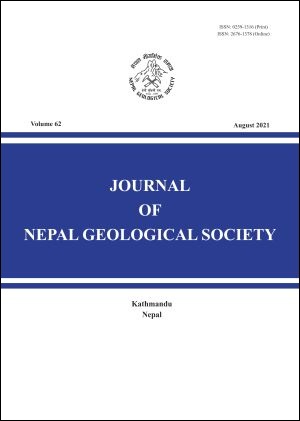Geometry, kinematics, and magnitude of extension across the Thakkhola Graben, Central Nepal Himalaya
DOI:
https://doi.org/10.3126/jngs.v62i0.38691Keywords:
Himalaya, Extension, Graben, Geometry, KinematicsAbstract
The Thakkhola Graben has been a region of geologic inquiry for many decades. Although it is widely viewed to be in a class of structures that are important in accommodating the three-dimensional strain within the Himalayan thrust wedge, we still lack a detailed understanding of the total finite strain accommodated by graben-bounding faults, as well as their shape and cross-cutting relationships with structures deeper in the thrust wedge. Using geologic mapping and structural analysis, we show that a suite of pre-extensional shortening structures is offset by normal-oblique faults bounding the Thakkhola Graben that we use to define a piercing line. We calculate these faults to have accommodated 8.7 kilometers of vertical thinning, 7.2 kilometers of arc-perpendicular shear, and only 2.2 kilometers of arc-parallel extension. The magnitude of arc-parallel extension is quite low compared to extensional structures to the west in the Gurla Mandhata-Humla region. The cross-cutting relationships established in this study and timing constraints determined by previous works are consistent with a structural history of crustal thickening leading to foreland propagation of the locus of arc-perpendicular shortening contemporaneous with hinterland extension.
Downloads
Downloads
Published
How to Cite
Issue
Section
License
© Nepal Geological Society




